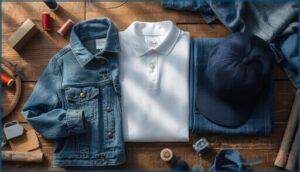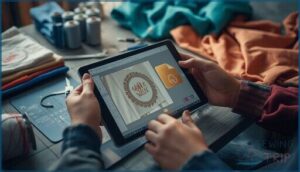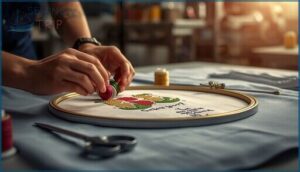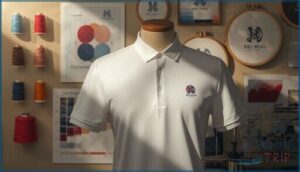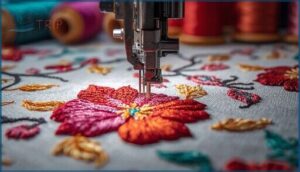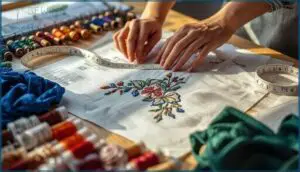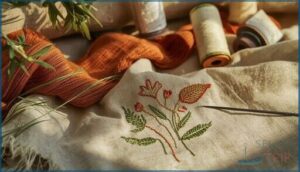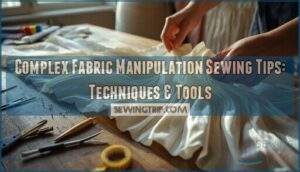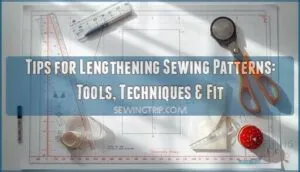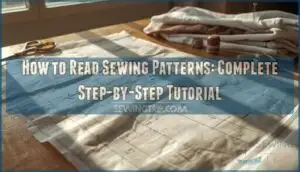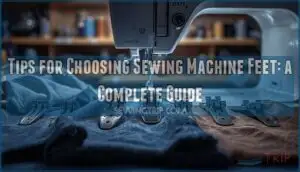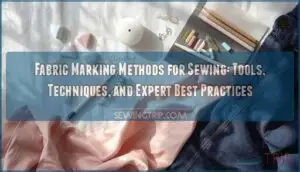This site is supported by our readers. We may earn a commission, at no cost to you, if you purchase through links.
Your logo tells a story, but embroidery makes it last. While screen prints crack and vinyl peels after a few dozen washes, quality stitching on the right fabric can survive years of wear without losing its shape or color.
That durability comes at a price, though—custom embroidery on clothing requires careful planning from the start. The garment you choose, how you prepare your artwork, and where you place your design all determine whether your finished piece looks sharp or sloppy.
Getting these details right means understanding how thread behaves on different fabrics, what your design needs to translate into stitches, and which choices actually protect your investment over time.
Table Of Contents
Key Takeaways
- Embroidery outlasts screen printing and vinyl because quality stitching on the right fabric can survive years of wear without losing shape or color, while proper fabric selection (tight weaves like cotton, medium weight 130-190 gsm) and correct stitch density prevent puckering and thread breakage.
- Successful embroidery requires careful artwork preparation including vector formats, simplified designs with 6-15 colors, text above 0.25 inches tall, and professional digitization that translates your logo into machine-readable stitch patterns optimized for your chosen fabric.
- Custom embroidery delivers exceptional marketing value at roughly 6,100 impressions per garment over its lifetime for just 0.1 cents per impression, significantly outperforming traditional advertising while building customer loyalty and brand recognition through consistent, professional appearance.
- The industry is shifting toward sustainable practices with eco-friendly fabrics like organic cotton and recycled polyester, while AI-powered machines and 3D embroidery technology enable personalized designs that meet the 36% of consumers actively seeking unique, customized clothing.
Tips for Designing Custom Embroidered Apparel
Your design choices set the foundation for embroidery that looks sharp and lasts. Small details like fabric weight, thread selection, and logo placement can make or break the final product.
Here’s what you need to think about before sending your artwork to production.
Choosing The Right Garment for Embroidery
Before you commit to your design, you need to select a garment that can handle the embroidery process and last through repeated wear. Fabric weave, garment weight, and fiber content all affect how well your finished piece holds up. Here are five factors to weigh when choosing:
- Fabric types with tight weaves — Cotton leads with over 60% of embroidery projects because the tight weave enables clean stitching.
- Thicker fabrics like denim and canvas — These offer stiffness and durability, ranking among the top three choices for machine embroidery.
- Garment weight between 130–190 gsm — Medium-weight cotton delivers the best results with minimal design distortion.
- Fiber content that ensures color fastness — Natural fibers reduce thread breakage by up to 40% compared to synthetics.
- Style selection for your intended use — Polos suit corporate projects, jackets add a premium touch, and hats remain a top seller for casual branding. For detailed embroidery, consider using linen for its strength.
Creating Artwork for Embroidery Digitization
Once you’ve picked your garment, your artwork needs prep for embroidery digitization. Start with vector formats like SVG or AI—they scale without pixelation. Keep text above 0.25 inches tall and lines at least 1.27 mm thick. Limit designs to 6–15 colors and simplify gradients.
To avoid blurry embroidery, consider artwork preparation basics. High-resolution files convert to a machine-readable format via a one-time fee, ensuring stitch density suits your fabric.
Selecting Thread Colors and Placement
After preparing your artwork, you’ll choose thread colors and placement. High-contrast thread colors improve logo embroidery visibility—61% of buyers favor this approach for uniforms. Placement durability effects matter: center chest designs retain 87% shape after 50 washes.
Consider these embroidery design guidelines:
- Position logos 7″ down from shoulder seams for consistency
- Match thread colors to garment base for cohesive appearance
- Embrace custom placement trends like cuff initials
Incorporating Branding Elements Effectively
Beyond thread colors and placement strategy, you’ll want your logo embroidery to tell a brand story. Color psychology influences how your target audience perceives your message—blue threads convey trust while red sparks energy.
Custom embroidery transforms each garment into a narrative piece. Logo visibility paired with thoughtful company branding creates mobile advertisements that reinforce your brand’s message with every wear.
Ensuring High-Quality Embroidery Results
Getting great embroidery results isn’t just about choosing the right design—it’s about understanding how thread and fabric work together. You need to know what happens when the needle hits the material and why certain choices lead to crisp, professional stitching.
Here’s what you should focus on to guarantee your custom embroidered apparel looks polished and lasts.
Understanding Stitch Types and Densities
You’ll want to understand how satin stitch and fill stitches work differently on custom embroidery designs. Satin stitch creates smooth lettering and borders, while fill stitches provide fabric coverage for larger areas.
Stitch density—usually 0.4 millimeters—directly affects durability testing results and your garment’s longevity. Too dense, and thread colors pucker; too loose, and stitching won’t hold. Getting this balance right ensures professional results.
Evaluating Fabric Compatibility
Before choosing your garment, consider fabric compatibility to assure embroidery designs translate well. Thread count between 250–400 TPI facilitates precision machine embroidery, while breathability adaptability differs across materials—cotton excels for casual embroidered apparel, but polyester needs stabilizers.
Watch for shrinkage rates: linen may shrink 5–10%, affecting thread colors and placement. Cotton-poly blends offer greater pilling resistance and fabric performance, holding custom embroidery through repeated wear.
Reviewing Proofs and Approving Artwork
After digitization, you’ll receive proofs for digital approval—review them carefully within 24 hours to avoid delays. Spelling errors, color mismatches, and placement issues account for most rejection rates, which can extend timelines by 33% and add revision fees.
- Check thread colors against your brand palette
- Verify logo details and text accuracy
- Confirm stitch density matches fabric weight
- Approve artwork within one business day
Requesting Sample Orders
A physical sample order acts as your quality checkpoint before committing to bulk production. Most embroidery providers complete sample orders within 3–7 business days, with digitization adding 1–2 days.
Sample order costs generally start at $25 per location, plus digitizing fees around $40 minimum.
This approval workflow reduces errors by 20% and ensures your embroidery design guidelines translate correctly onto fabric—following industry standards that achieve 98% accuracy post-approval.
Custom Embroidery Ordering Best Practices
Placing your custom embroidery order doesn’t have to feel overwhelming if you know what to prepare ahead of time. A smooth ordering process starts with clear communication and attention to the details that matter most for your project.
Here’s what you need to focus on to get exactly what you’re envisioning.
Gathering Accurate Order Details
Order form accuracy starts with collecting the right customer information—your name, contact details, delivery date, and purchase order number. Data entry automation cuts errors by up to 63%, so use digital forms whenever possible.
To nail your custom embroidery order, include:
- Item descriptions, quantities, and garment styles
- Artwork file names and thread color codes
- Payment terms and design placement instructions
This careful record-keeping impact shows in the proofing process, ensuring your custom apparel matches your vision.
Comparing Product and Pricing Options
Your budget stretches further when you compare garment options with stitch count impact in mind. Custom embroidery costs vary by product type and design complexity. Polo shirts generally run $8–$15 each, while jackets cost $12–$20. Stitch pricing averages $1–$3 per 1,000 stitches, plus $5–$10 setup fees.
| Product Type | Unit Cost Range | Typical Stitch Count |
|---|---|---|
| Polo Shirts | $8–$15 | 3,000–7,000 stitches |
| Jackets | $12–$20 | 5,000–10,000 stitches |
| Hats | $6–$12 | 2,000–5,000 stitches |
Digitizing fees, which depend on design intricacy, range from $10–$60 per artwork file. Material choice adds $0.20–$0.50+ per unit for organic fabrics. Volume discounts significantly reduce per-piece rates: orders of 200+ pieces drop to $3–$5 each, making custom embroidery more accessible for larger runs.
Custom apparel pricing becomes clearer when you understand these garment cost analysis elements and custom clothing pricing structures.
Taking Advantage of No Minimums and Discounts
No minimum order policies open custom embroidery to startups and small brands. You can order exact quantities—eliminating excess inventory costs while testing market response without large commitments.
Volume discount savings begin around 50 pieces, cutting per-item rates by 40%. Promotional strategies like seasonal deals and referral bonuses reward repeat customers.
Rapid turnaround for micro-orders delivers custom embroidered clothing in 2–5 business days, maximizing small order benefits.
Tracking Turnaround Times and Production
Once artwork approval and production commitments lock in, your order enters the workflow. Standard embroidery turnaround spans 8–10 business days, while rush orders shave that to 2–3 days at a premium.
Order tracking systems automate updates on order processing stages—from digitization through shipping—so you monitor production capacity in real-time. Priority processing adds 25–50% to costs but guarantees faster delivery when deadlines loom.
Maximizing The Impact of Embroidered Clothing
Embroidered clothing is most effective when it has a clear purpose beyond decoration. Whether you’re building brand recognition or strengthening team connections, the right approach makes your custom apparel memorable.
Here’s how to get the most from your embroidered pieces in real-world settings.
Enhancing Brand Identity With Embroidery
Placing your logo embroidery on the chest or sleeve creates instant visual consistency that customers remember. Custom embroidery elevates brand storytelling through color psychology—choosing thread shades that reflect your values and resonate with your target audience.
Since 79% of consumers link embroidered apparel with professionalism, this branding approach builds trust while your uniforms tell a cohesive story about who you are.
Using Embroidered Apparel for Business Promotion
Custom embroidery turns your corporate apparel into working advertisements. Logo embroidery on uniforms delivers roughly 6,100 impressions per jacket over its lifetime—at a cost per impression as low as 0.1 cents. That cost efficiency outpaces traditional media while boosting customer loyalty by 75% among recipients.
Logo embroidery on uniforms delivers 6,100 lifetime impressions per jacket at just 0.1 cents each, outperforming traditional advertising while building lasting customer loyalty
You’ll see stronger employee engagement when teams wear cohesive branded clothing that extends your market reach and reinforces business promotion everywhere they go.
Creating Lasting Impressions at Events
Event marketing thrives when embroidered apparel becomes your silent spokesperson. About 85% of attendees remember brands that handed out embroidered shirts or jackets, proving brand visuals stick.
Coordinated corporate event clothing signals professionalism—61% find uniformed staff more credible. Use embroidered branded gifts as engagement tactics: 52% more booth visits follow giveaway offers.
Quality stitching on fleece or outerwear delivers post-event exposure for years, generating thousands of impressions per piece while maintaining aesthetic impact through color-matched thread and logo placement that reinforces team unity and employee appreciation.
Fostering Team Spirit and Community Engagement
When your team wears embroidered uniforms, you’re not just coordinating clothing—you’re building organizational belonging. Custom embroidery strengthens team unity at corporate events and community outreach initiatives, creating visible morale boosts that turn employee appreciation into lasting brand visibility.
Companies report a 20% productivity boost with branded apparel, while over 85% of people recall a brand after receiving embroidered items.
Embracing Trends and Sustainability in Embroidery
The embroidery industry is moving fast, and staying current means keeping an eye on both innovation and environmental responsibility. Today’s consumers want designs that stand out while also caring about where materials come from and how long products last.
Let’s look at four key areas that can help you align your embroidery projects with what’s happening now in the market.
Exploring Eco-Friendly Fabric Choices
Sustainable products transform your embroidered apparel into a statement about environmental consciousness. Organic cotton t-shirts give you a pesticide-free foundation with remarkable durability, while recycled polyester diverts plastic bottles into wearable art. Linen and hemp offer breathability with minimal water use, and bamboo alternatives grow without chemicals.
Look for certification standards like GOTS to verify your eco-friendly embroidery choices align with genuine sustainability practices.
Incorporating Personalized and 3D Embroidery
Clothing with custom embroidery responds directly to consumer preferences—49% of buyers make impulse purchases after an experience crafted for them. Thread colors and embroidery designs that incorporate names or monograms create brand exclusivity:
- 3D puff embroidery adds depth using high-density foam beneath stitches
- Digital integration allows real-time customization for unique pieces
- Weaving textures layer differently to capture attention
This approach strengthens customer loyalty while reducing inventory waste.
Leveraging Advanced Embroidery Technology
AI-powered machines now automatically adjust thread tension and stitch density to suit any fabric you choose. This automation integration cuts material waste while speeding up your embroidery digitization process into a machine-readable format. Predictive maintenance keeps equipment running, and design software with 3D simulation lets you preview unlimited color embroidery before production. Workforce training programs help teams master these tools, turning complex stitching into a fluid weaving of innovation and tradition.
| Technology | Benefit | Application |
|---|---|---|
| AI-Powered Machines | Adjusts tension automatically | Consistent stitching quality |
| Design Software | Real-time 3D previews | Error-free digitization process |
| Predictive Maintenance | Reduces downtime | Uninterrupted production flow |
Meeting Consumer Demand for Unique Designs
You face a market where 36% of consumers actively seek custom clothing—a clear signal that one-size-fits-all is fading fast.
E-commerce impact has made custom embroidery accessible to Millennials and Gen Z, who drive design innovation through social platforms.
Personalization trends now merge with sustainable expectations, so your embroidery designs must reflect both individuality and eco-consciousness.
Clothing customization and thoughtful apparel design create the connection modern buyers crave.
Frequently Asked Questions (FAQs)
How do I care for embroidered clothing?
Want your embroidered clothing to last? Machine wash on delicate with cold water, air dry flat, and iron face-down using low heat.
Store folded in cool, dry spaces to preserve thread colors and stitching integrity.
Can embroidery be removed or altered later?
Yes, but removal success rates depend on fabric type and stitch density.
Professional alteration techniques minimize visible residue and fabric damage risk on embroidered clothing, though some needle marks may persist despite careful stitching extraction.
Whats the difference between embroidery and screen printing?
Some swear screen printing’s perfectly crisp logos mean embroidery’s outdated—yet embroidery services dominate with raised, textured durability.
Screen printing offers flat, cost-effective bulk design dimensionality, while custom embroidered apparel provides unparalleled fabric suitability and market share resilience.
How much does custom embroidery typically cost?
Custom embroidery services generally charge $10 to $50 per item. Embroidery cost factors include stitch count pricing, garment type costs, and digitization fees. Bulk order discounts reduce per-piece rates considerably for larger quantities.
Can I embroider onto pre-owned garments?
Think of pre-owned garments as blank canvases waiting for transformation. You can absolutely add custom embroidery to secondhand clothing, turning ordinary pieces into embroidered apparel through careful garment sourcing, fabric condition checks, and design adaptation.
Conclusion
Think of embroidery as a permanent handshake—it introduces your brand with confidence and stays firm through every interaction. When you invest in custom embroidery on clothing, you’re choosing visibility that endures beyond trends and wash cycles.
The right fabric, precise digitization, and thoughtful placement transform thread into a statement that doesn’t fade. Your design isn’t just decoration—it’s a commitment to quality that people can see and feel every time they wear it.
- https://www.linkedin.com/pulse/embroidery-market-report-opportunities-growth-o29hf
- https://www.cognitivemarketresearch.com/embroidery-market-report
- https://www.ibisworld.com/united-states/industry/commercial-embroidery-services/5325/
- https://www.maggieframes.com/blogs/embroidery-blogs/custom-apparel-market-analysis-growth-drivers-trends-and-strategic-opportunities
- https://finance.yahoo.com/news/custom-apparel-market-grow-usd-030100795.html


